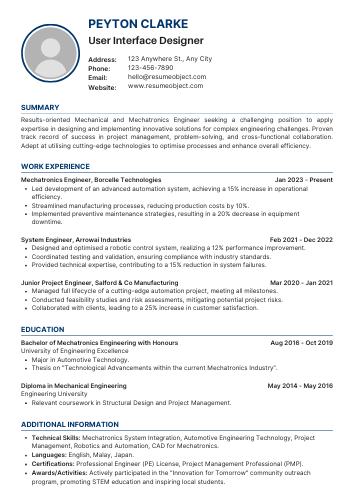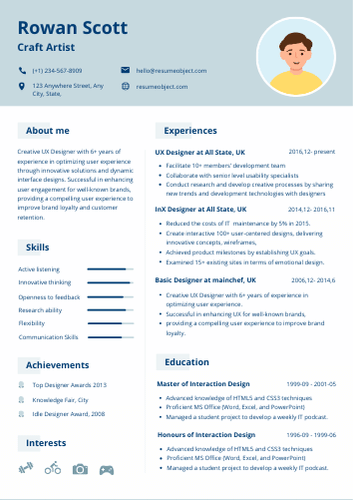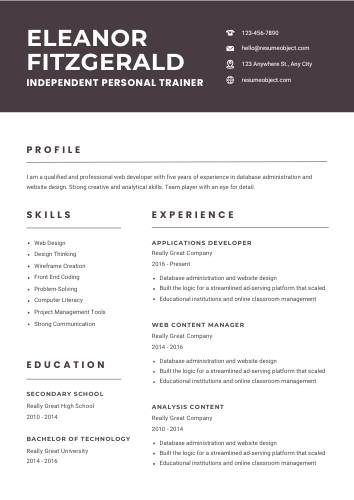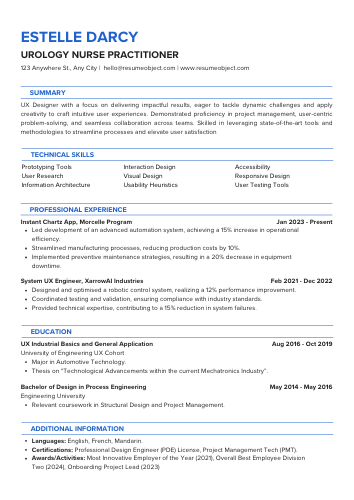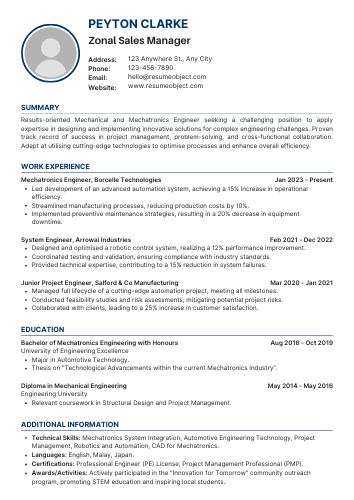Pharmacovigilance Scientist Resume Examples & Download Free Template
Pharmacovigilance Scientist Resume
In the competitive field of pharmacovigilance, a well-crafted scientist resume is essential for standing out. A tailored resume template can highlight your skills, experience, and qualifications effectively, making a strong impression on potential employers.
This article provides a comprehensive guide to creating a successful pharmacovigilance scientist resume. By utilizing a sample format, you can ensure that your resume showcases your expertise in drug safety and regulatory compliance, ultimately increasing your chances of landing your dream job.
Pharmacovigilance Scientist Resume Objective Statement Examples
Explore effective resume objective examples for Pharmacovigilance Scientists, highlighting key skills, expertise, and career goals to attract potential employers and demonstrate a commitment to drug safety and patient health.
-
Detail-oriented Pharmacovigilance Scientist with over 5 years of experience in drug safety and risk management, seeking to leverage expertise in signal detection and analysis to enhance patient safety at [Company Name].
-
Dedicated Pharmacovigilance Professional aiming to utilize strong analytical skills and knowledge of regulatory compliance to contribute to the development of safe and effective pharmaceutical products at [Company Name].
-
Results-driven Pharmacovigilance Scientist with a proven track record in adverse event reporting and data analysis, looking to apply my skills in a challenging role at [Company Name] to ensure compliance with global regulations.
-
Experienced Pharmacovigilance Specialist seeking to join [Company Name] to utilize my proficiency in safety database management and risk assessment to support the continuous improvement of drug safety protocols.
-
Analytical and proactive Pharmacovigilance Scientist aiming to contribute to [Company Name] by applying my expertise in clinical trial safety monitoring and post-marketing surveillance to enhance overall patient health outcomes.
Explore our comprehensive guide on how to create an impressive DCS Engineer Resume that showcases your skills and experiences effectively, ensuring you stand out in the competitive job market.
Example Summary for Pharmacovigilance Scientist Resume
This section provides a concise example of a resume summary tailored for a Pharmacovigilance Scientist role, highlighting key skills, experiences, and qualifications that attract potential employers in the pharmaceutical industry.
Detail-oriented and motivated recent graduate with a strong foundation in pharmacovigilance and drug safety. Proficient in analyzing adverse event data and conducting thorough literature reviews. Adept at collaborating with cross-functional teams to ensure compliance with regulatory standards. Passionate about contributing to patient safety and improving drug efficacy through meticulous data management and reporting. Seeking to leverage analytical skills and scientific knowledge in an entry-level Pharmacovigilance Scientist position.
Detail-oriented Pharmacovigilance Scientist with over 5 years of experience in drug safety and risk management. Proven expertise in conducting thorough safety assessments, analyzing adverse event reports, and ensuring compliance with regulatory requirements. Strong analytical skills combined with a deep understanding of pharmacology and toxicology principles. Adept at collaborating with cross-functional teams to enhance product safety profiles and support clinical development. Committed to maintaining the highest standards of patient safety and contributing to the advancement of public health. Seeking to leverage my skills in a dynamic environment focused on innovative healthcare solutions.
Results-driven Pharmacovigilance Scientist with over 10 years of extensive experience in drug safety, risk management, and regulatory compliance within the pharmaceutical industry. Proven expertise in analyzing adverse event reports, conducting signal detection, and developing risk assessment strategies to ensure patient safety and regulatory adherence. Strong background in cross-functional collaboration, leading teams in the evaluation of safety data, and implementing pharmacovigilance systems. Adept at leveraging data analytics to inform decision-making and enhance the safety profile of pharmaceutical products. Committed to continuous improvement and upholding the highest standards of quality in pharmacovigilance practices.
Similar Resumes
Key Job Duties & Responsibilities of Pharmacovigilance Scientist
Detail-oriented Pharmacovigilance Scientist responsible for monitoring drug safety, analyzing adverse event reports, ensuring regulatory compliance, and collaborating with cross-functional teams to enhance patient safety and product efficacy.
-
Safety Data Management: Collect, analyze, and interpret safety data from clinical trials and post-marketing surveillance to ensure patient safety.
-
Adverse Event Reporting: Prepare and submit reports on adverse events to regulatory authorities, ensuring compliance with local and international regulations.
-
Risk Assessment: Conduct risk assessments to identify potential safety issues associated with drugs and recommend risk mitigation strategies.
-
Signal Detection: Monitor and detect safety signals from various data sources, including clinical studies, literature, and spontaneous reports.
-
Collaboration with Cross-Functional Teams: Work closely with clinical, regulatory, and quality assurance teams to ensure integrated safety management throughout the product lifecycle.
-
Regulatory Compliance: Stay updated on pharmacovigilance regulations and guidelines, ensuring that all activities comply with industry standards and legal requirements.
-
Data Analysis and Interpretation: Utilize statistical methods and software to analyze safety data, drawing meaningful conclusions and insights.
-
Documentation and Record Keeping: Maintain accurate and comprehensive documentation of safety data, analyses, and reports to support audits and inspections.
-
Training and Mentorship: Provide training and guidance to junior staff and cross-functional teams on pharmacovigilance processes and best practices.
-
Communication with Stakeholders: Effectively communicate safety findings and recommendations to internal stakeholders and external partners, fostering a culture of safety.
-
Continuous Improvement: Identify opportunities for process improvements in pharmacovigilance activities and contribute to the development of best practices.
Important Sections to Add in Pharmacovigilance Scientist Resume
Highlighting key sections in a Pharmacovigilance Scientist resume is crucial for showcasing relevant skills, experience, and education. Essential elements include professional summary, work experience, certifications, technical skills, and publications to attract potential employers effectively.
-
Contact Information: Include your full name, phone number, email address, and LinkedIn profile. Make it easy for potential employers to reach you.
-
Professional Summary: Write a concise summary highlighting your experience, skills, and career goals. Tailor this to reflect your expertise in pharmacovigilance.
-
Education: List your degrees, including the institution names and graduation dates. Include relevant certifications, such as a degree in pharmacy, life sciences, or specific pharmacovigilance training.
-
Work Experience: Detail your relevant work history, emphasizing roles that involved drug safety, risk management, and regulatory compliance. Use bullet points to showcase your achievements and responsibilities.
-
Skills: Highlight key skills pertinent to pharmacovigilance, such as data analysis, knowledge of regulatory guidelines, adverse event reporting, and risk assessment. Include both technical and soft skills.
-
Technical Proficiencies: Mention software and tools you are proficient in, such as safety databases (e.g., ARISg, Oracle), data visualization tools, or statistical software.
-
Certifications and Training: Include any additional certifications relevant to pharmacovigilance, such as Good Clinical Practice (GCP) or Good Pharmacovigilance Practices (GVP).
-
Publications and Presentations: If applicable, list any relevant research publications or presentations at conferences. This adds credibility and showcases your engagement in the field.
-
Professional Affiliations: Mention memberships in professional organizations related to pharmacovigilance or drug safety, demonstrating your commitment to the field.
-
References: Consider including a statement that references are available upon request, or provide contact details for professional references if space allows.
Required Skills for Pharmacovigilance Scientist Resume
When crafting your Pharmacovigilance Scientist resume, highlight essential skills that showcase your expertise in drug safety, data analysis, and regulatory compliance. These will make your application stand out to potential employers in the pharmaceutical industry.
- Adverse Event Reporting
- Risk Management
- Regulatory Compliance
- Data Analysis
- Signal Detection
- Medical Writing
- Clinical Trial Knowledge
- Pharmacology Understanding
- Statistical Analysis
- Project Management
- Communication Skills
- Critical Thinking
- Attention to Detail
- Team Collaboration
- Software Proficiency (e.g., SAS, R)
Action Verbs to Use in Pharmacovigilance Scientist Resume
Incorporating impactful action verbs in your Pharmacovigilance Scientist resume enhances clarity and demonstrates your expertise. These dynamic words effectively highlight your contributions, skills, and achievements, making your application more compelling to potential employers.
- Analyzed
- Assessed
- Monitored
- Evaluated
- Investigated
- Documented
- Collaborated
- Reported
- Implemented
- Coordinated
- Reviewed
- Conducted
- Facilitated
- Recommended
- Communicated
Entry-Level Pharmacovigilance Scientist Resume Sample
Looking to kickstart your career in pharmacovigilance? Check out this sample entry-level scientist resume that highlights essential skills, relevant experience, and educational background to help you stand out in the competitive job market.
Sample Resume #1
Contact Information
John Doe
123 Main Street
City, State, Zip
Phone: (123) 456-7890
Email: [email protected]
LinkedIn: linkedin.com/in/johndoe
Objective
Detail-oriented and motivated recent graduate with a Bachelor’s degree in Pharmaceutical Sciences seeking an entry-level position as a Pharmacovigilance Scientist. Eager to apply strong analytical and problem-solving skills to ensure drug safety and compliance.
Education
Bachelor of Science in Pharmaceutical Sciences
University of XYZ, City, State
Graduated: May 2023
- Relevant Coursework: Drug Safety, Pharmacology, Biostatistics, Clinical Trials
Skills
- Strong analytical and research skills
- Knowledge of pharmacovigilance regulations and guidelines
- Proficient in data analysis software (SAS, R)
- Excellent written and verbal communication skills
- Attention to detail and strong organizational abilities
- Ability to work collaboratively in a team environment
Internship Experience
Pharmacovigilance Intern
ABC Pharmaceuticals, City, State
June 2022 – August 2022
- Assisted in the collection and analysis of adverse event reports.
- Contributed to the preparation of safety reports and documentation.
- Supported the pharmacovigilance team in regulatory compliance activities.
- Participated in team meetings and presented findings on drug safety trends.
Research Experience
Undergraduate Research Assistant
XYZ University, City, State
September 2021 – May 2023
- Conducted research on drug interactions and their effects on patient safety.
- Analyzed data using statistical software and presented results at departmental seminars.
- Collaborated with faculty to publish findings in a peer-reviewed journal.
Certifications
- Good Clinical Practice (GCP) Certification
- Basic Life Support (BLS) Certification
Professional Affiliations
- Member, American Pharmacists Association (APhA)
- Member, International Society of Pharmacovigilance (ISoP)
References
Available upon request.
Pharmacovigilance Scientist Sample Resume (Mid-Level)
This sample resume highlights the qualifications and experience of a mid-level pharmacovigilance scientist, showcasing expertise in drug safety, regulatory compliance, and risk assessment, tailored to attract potential employers in the pharmaceutical industry.
Sample Resume #2
Contact Information
John Doe
123 Main Street
City, State, Zip
Email: [email protected]
Phone: (123) 456-7890
LinkedIn: linkedin.com/in/johndoe
Professional Summary
Detail-oriented and analytical Pharmacovigilance Scientist with over 5 years of experience in drug safety and risk management. Proven track record in analyzing adverse event data, preparing regulatory submissions, and collaborating cross-functionally to ensure compliance with global safety regulations. Adept at utilizing data analytics to drive improvements in pharmacovigilance processes.
Education
Master of Science in Pharmacology
University of Health Sciences, City, State
Graduated: May 2018
Bachelor of Science in Biology
State University, City, State
Graduated: May 2015
Professional Experience
Pharmacovigilance Scientist
ABC Pharmaceuticals, City, State
June 2018 - Present
- Conduct comprehensive analysis of adverse event reports and identify trends to mitigate risks associated with drug therapies.
- Prepare and submit periodic safety update reports (PSURs) to regulatory authorities, ensuring compliance with local and international guidelines.
- Collaborate with clinical teams to assess safety data from clinical trials and post-marketing studies.
- Develop and implement pharmacovigilance training programs for staff to enhance awareness of safety reporting practices.
Pharmacovigilance Associate
XYZ Biotech, City, State
June 2015 - May 2018
- Assisted in the collection, evaluation, and reporting of adverse drug reactions (ADRs) in accordance with regulatory requirements.
- Supported the preparation of safety documents and contributed to risk management plans.
- Engaged in the review of product labeling and promotional materials to ensure safety information is accurately reflected.
- Participated in internal audits and inspections to maintain compliance with pharmacovigilance standards.
Skills
- Strong knowledge of pharmacovigilance regulations (FDA, EMA, ICH)
- Proficient in safety database systems (e.g., Argus, Veeva Vault)
- Excellent analytical and problem-solving skills
- Effective communication and teamwork abilities
- Detail-oriented with strong organizational skills
Certifications
- Certified Pharmacovigilance Professional (CPP)
- Good Clinical Practice (GCP) Certification
Professional Affiliations
- Member, Drug Information Association (DIA)
- Member, International Society of Pharmacovigilance (ISoP)
References
Available upon request.
Pharmacovigilance Scientist Sample Resume for Experienced Level
Looking for a standout resume format for a Senior-Level Pharmacovigilance Scientist? This sample showcases essential skills and experiences, helping you highlight your expertise in drug safety and regulatory compliance to catch employers' attention.
Sample Resume #3
Contact Information
Name: John Doe
Phone: (123) 456-7890
Email: [email protected]
LinkedIn: linkedin.com/in/johndoe
Location: City, State
Professional Summary
Dedicated and detail-oriented Pharmacovigilance Scientist with over 10 years of experience in drug safety and risk management. Proven expertise in adverse event reporting, data analysis, and regulatory compliance. Strong ability to collaborate with cross-functional teams to ensure patient safety and product efficacy. Committed to enhancing pharmacovigilance processes and improving patient outcomes.
Core Competencies
- Adverse Event Reporting
- Risk Assessment and Management
- Regulatory Compliance (FDA, EMA)
- Signal Detection and Analysis
- Clinical Trial Support
- Data Mining and Statistical Analysis
- Cross-Functional Collaboration
- Training and Mentorship
Professional Experience
Senior Pharmacovigilance Scientist
Company Name, City, State
Month Year – Present
- Lead the pharmacovigilance team in the evaluation and management of adverse event reports, ensuring compliance with regulatory requirements.
- Conduct thorough signal detection and risk assessment activities, identifying potential safety issues and recommending appropriate actions.
- Collaborate with clinical, regulatory, and medical affairs teams to support product safety initiatives and clinical trial activities.
- Develop and implement standard operating procedures (SOPs) for pharmacovigilance processes, enhancing operational efficiency.
- Mentor and train junior staff on pharmacovigilance practices and regulatory guidelines.
Pharmacovigilance Scientist
Company Name, City, State
Month Year – Month Year
- Managed the collection, evaluation, and reporting of adverse events in compliance with global regulatory requirements.
- Conducted data analysis using statistical software to identify trends and potential safety signals.
- Prepared and submitted periodic safety update reports (PSURs) and other regulatory submissions to health authorities.
- Collaborated with cross-functional teams to ensure timely and accurate reporting of safety data.
Education
Master of Science in Pharmacology
University Name, City, State
Month Year
Bachelor of Science in Biology
University Name, City, State
Month Year
Certifications
- Certified Pharmacovigilance Professional (CPP)
- Good Clinical Practice (GCP) Certification
Professional Affiliations
- Member, Drug Information Association (DIA)
- Member, International Society of Pharmacovigilance (ISoP)
References
Available upon request.
Resume Tips That Work for Pharmacovigilance Scientist Resume
Do
Do: Highlight Relevant Education - Include your degree in pharmacy, life sciences, or a related field to establish your foundational knowledge in pharmacovigilance.
Do: Showcase Experience in Adverse Event Reporting - Detail your hands-on experience with collecting, analyzing, and reporting adverse events to demonstrate your practical skills in the field.
Do: Emphasize Regulatory Knowledge - Mention your familiarity with regulations and guidelines from agencies like the FDA or EMA to show your understanding of compliance requirements.
Do: Demonstrate Data Analysis Skills - Highlight your proficiency in data analysis tools and methodologies, showcasing your ability to interpret complex data sets for safety assessments.
Do: Include Communication Skills - Illustrate your ability to convey complex information clearly to stakeholders, emphasizing your role in cross-functional teams and presentations.
Don't
Don't: Include irrelevant work experience that does not pertain to pharmacovigilance or the pharmaceutical industry, as it can dilute your qualifications and confuse hiring managers.
Don't: Use overly technical jargon that may not be understood by all readers, especially if the resume is being reviewed by HR personnel rather than technical experts.
Don't: Neglect to quantify achievements; instead of just listing responsibilities, include specific metrics or outcomes to demonstrate your impact in previous roles.
Don't: Use a generic template that lacks personalization; tailor your resume to highlight skills and experiences that align with the specific job you are applying for.
Don't: Forget to proofread for grammatical errors and typos, as these can create a negative impression and suggest a lack of attention to detail, which is crucial in pharmacovigilance.
Pharmacovigilance Scientist Sample Cover Letter
A sample pharmacovigilance scientist cover letter provides a professional template highlighting key skills, experience, and qualifications, helping applicants craft compelling applications to showcase their expertise and secure opportunities in drug safety and monitoring.
Dear [Hiring Manager's Name],
I am writing to express my interest in the Pharmacovigilance Scientist position at [Company Name]. With a solid background in drug safety and extensive experience in regulatory compliance, I am confident in my ability to contribute effectively to your team.
In my previous role at [Previous Company Name], I successfully managed the safety monitoring of multiple clinical trials, ensuring that all adverse events were promptly reported and analyzed. My attention to detail and commitment to maintaining high standards of safety have resulted in a significant reduction in reporting timelines.
I am particularly drawn to this opportunity at [Company Name] due to your commitment to innovation in drug development. I am eager to bring my expertise in signal detection and risk management to your organization, helping to enhance patient safety and support your mission.
Thank you for considering my application. I look forward to the opportunity to discuss how my skills and experiences align with the needs of your team.
Sincerely,
[Your Name]
[Your Contact Information]
FAQs about Pharmacovigilance Scientist Resume
What qualifications and education are essential for a Pharmacovigilance Scientist resume?
A Pharmacovigilance Scientist typically requires a degree in life sciences, pharmacy, or a related field. Advanced qualifications, such as a Master's or PhD, enhance prospects. Relevant certifications in pharmacovigilance or drug safety, along with experience in clinical research or regulatory affairs, are also highly beneficial.
How should pharmacovigilance experience and case handling be highlighted on a resume?
Highlight pharmacovigilance experience by detailing specific roles, responsibilities, and achievements in case handling. Use quantifiable metrics to demonstrate impact, such as the number of cases managed or improved reporting timelines. Emphasize relevant skills like data analysis, regulatory compliance, and collaboration with cross-functional teams to showcase your expertise effectively.
What key skills, such as adverse event reporting and risk assessment, should be included in a Pharmacovigilance Scientist resume?
A Pharmacovigilance Scientist resume should highlight key skills such as adverse event reporting, risk assessment, data analysis, regulatory compliance, signal detection, and communication. Proficiency in pharmacovigilance databases and software, along with a strong understanding of clinical trial processes and safety regulations, is also essential for success in this role.
How can I structure a resume to emphasize regulatory compliance knowledge for a Pharmacovigilance Scientist role?
To emphasize regulatory compliance knowledge in your Pharmacovigilance Scientist resume, highlight relevant certifications, training, and experience in regulatory guidelines (e.g., FDA, EMA). Use bullet points to detail specific projects or roles where you ensured compliance, and quantify achievements to demonstrate your impact on safety and efficacy.
What common mistakes should be avoided when preparing a resume for a Pharmacovigilance Scientist position?
Common mistakes to avoid include using a generic resume template, neglecting to tailor your experience to pharmacovigilance, failing to highlight relevant skills like data analysis and regulatory knowledge, and overlooking the importance of quantifying achievements. Additionally, avoid typos and ensure clarity and professionalism throughout the document.
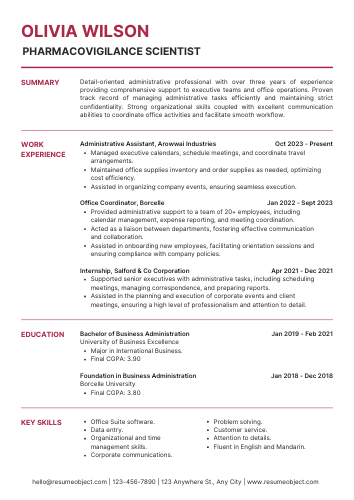
Pharmacovigilance Scientist Resume
Objective
Detail-oriented Pharmacovigilance Scientist with expertise in drug safety and regulatory compliance, seeking to leverage analytical skills and industry knowledge to enhance patient safety and contribute to innovative pharmaceutical solutions.
Summary/Description
Detail-oriented Pharmacovigilance Scientist with 5+ years of experience in drug safety, risk assessment, and regulatory compliance. Proven track record in analyzing adverse events and ensuring patient safety through effective monitoring.
Top Required Skills
Drug Safety Assessment
Regulatory Compliance
Data Analysis
Risk Management
Communication Skills
Mistakes to Avoid
Lack of relevant experience in drug safety and adverse event reporting.
Failing to highlight knowledge of regulatory guidelines and compliance standards.
Not showcasing strong analytical skills and attention to detail.
Important Points to Add
Strong knowledge of drug safety regulations and guidelines (e.g., FDA, EMA)
Proficiency in adverse event reporting and signal detection methodologies
Experience with pharmacovigilance databases and data analysis tools (e.g., Oracle Argus, VigiBase)
View More Templates
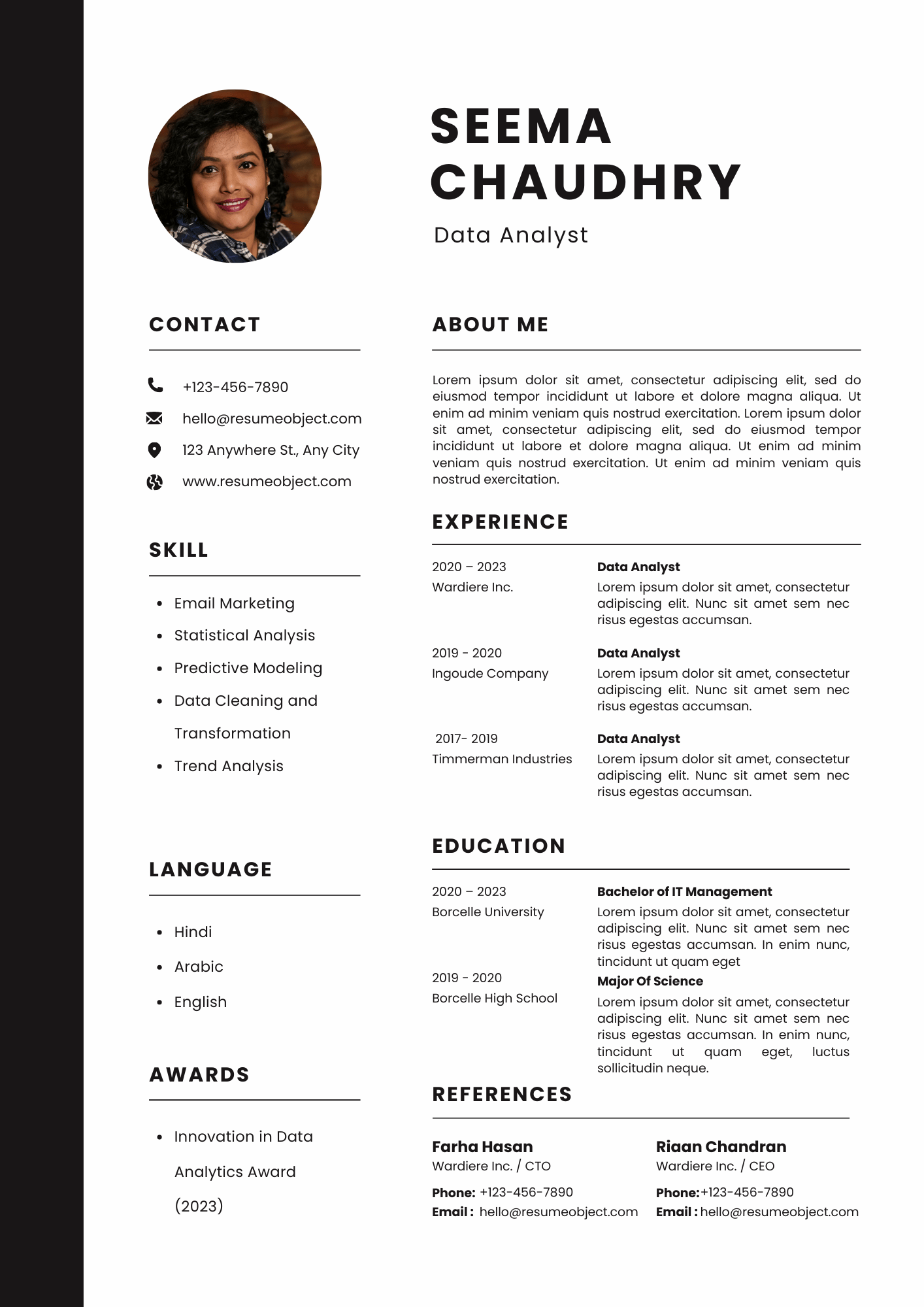 Free Resume Templates
Free Resume Templates

